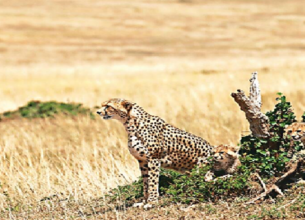GRAM SABHAS OPPOSES INDIA’S NEUTRINO OBSERVATORY PROGRAMME
29, Jan 2020

Prelims level : Environmental Impact Assessment
Mains level : GS-III Conservation, Environmental Pollution and Degradation, Environmental Impact Assessment
Why in News?
- Gram Sabhas in different parts of Tamil Nadu have passed resolutions against the India-based Neutrino Observatory (INO) and Hydrocarbon Exploration.
About Gram Sabha:
- The term Gram Sabhais defined in the Constitution under Article 243(b).
- It is the primary and permanent body of the Panchayati Raj system.
- The power to annul a decision of the Gram Sabharests with the Gram Sabha only.
- Persons, those who are above 18 years, living in the village whose names are included in the electoral rolls for the Panchayat at the village level can become a member of Gram Sabha.
- The constitution empowered the State Legislaturesto define the powers and functions of the Gram Sabhas through laws passed by them.
About INO:
- The INO is aimed at building a world-class underground laboratory with a rock cover to conduct basic research on the neutrino.
- The INO will study atmospheric neutrinos only. Solar neutrinos have much lower energy than the detector can detect.
- The Tata Institute of Fundamental Research is the nodal institution. The observatory is to be built jointly with the Department of Atomic Energy and the Department of Science and Technology.
- It is not a weapons laboratory and will have no strategic or defence applications.
- INO is being constructed in the Bodi West Hills (Theni district) of Tamil Nadu.
- The site is near the Kerala-Tamil Nadu border and is close to the Mathikettan Shola National Park.
- Vaigai River passes through the Theni district.
How the Project Started?
- Environmental clearance was given after going through the geotechnical investigation report on studies carried out for INO set aside the concerns related to radioactivity or leaching of water, besides having the impact of blasting on inhabitation in the vicinity.
- According to the geotechnical investigation report the operation of INO will have no release of radioactive or toxic substances.
- Earlier in 2019, the National Green Tribunal (NGT) has upheld the environmental clearance granted in March 2018 to the project.
- However, the project could not be implemented until the approval of the National Board of Wildlife is also Received.
Who issues Environmental Clearance?
- Environmental Clearance is conducted to assess the impact of the planned project on the environment and people and to try to reduce the impact of the same.
- Currently in our country the environmental clearance process is carried out for 39 types of projects.
- Environmental clearance is granted by the Ministry of Environment, and the State Environment Impact Assessment Authority (SEIAA), under the Environment Impact Assessment (EIA) notification of 2006.
- This notification details the process for granting EC.
- It includes the structure of the EIA report, process of appraisal, and the conditions and safeguards that a company has to implement, including what the environment management plan should be.
- The appraisal is carried out by the Expert Appraisal Committees (EACs), which largely comprise of ‘professionals and experts’.
- EIA Notification 2006 was issued under the sub-rule (3) of Rule 5 of the Environment (Protection) Rules, 1986. This rule gives powers to the central government to impose certain restrictions and prohibitions on the location of an industry, or the carrying out of processes and operations in an area, based on their potential Environmental Impacts.

Why the Project is Opposed?
- The project may have harmful effects on the fertility of the land in the region and adversely affect the agricultural community, farm labourers and others dependent on the profession.
- Further, it can result in the migration of farm labourers.
- Massive scale of construction underground and controlled blasts, the vibrations from the explosions can badly affect the ecologically fragile Western Ghats.
- Other concerns voiced range from radiation, structural damage to the mountain to the emission of hazardous chemicals.
Way Forward:
- EC letters should clearly mention cost of activities under the Environmental Management Plan along with the timelines for their Implementation.
- The capital and revenue expenditure amount to be spent on corporate environmental responsibility (CSR) cost should be distinctly specified in the EC letter.
- EC conditions should be more specific for the area to be developed under green belt and species is to be planted in consultation with forest/agriculture department along with post EC third party evaluation.
- While prescribing the conditions of environment clearance, the details about installation of monitoring stations and frequency of monitoring of various environment parameters in respect of air, surface water, ground water, noise, etc. should be clearly mentioned.
- It also said that the conditions of environment clearance should be compatible with the nature and type of project in order to avoid non-uniformity in similar kinds of projects.














